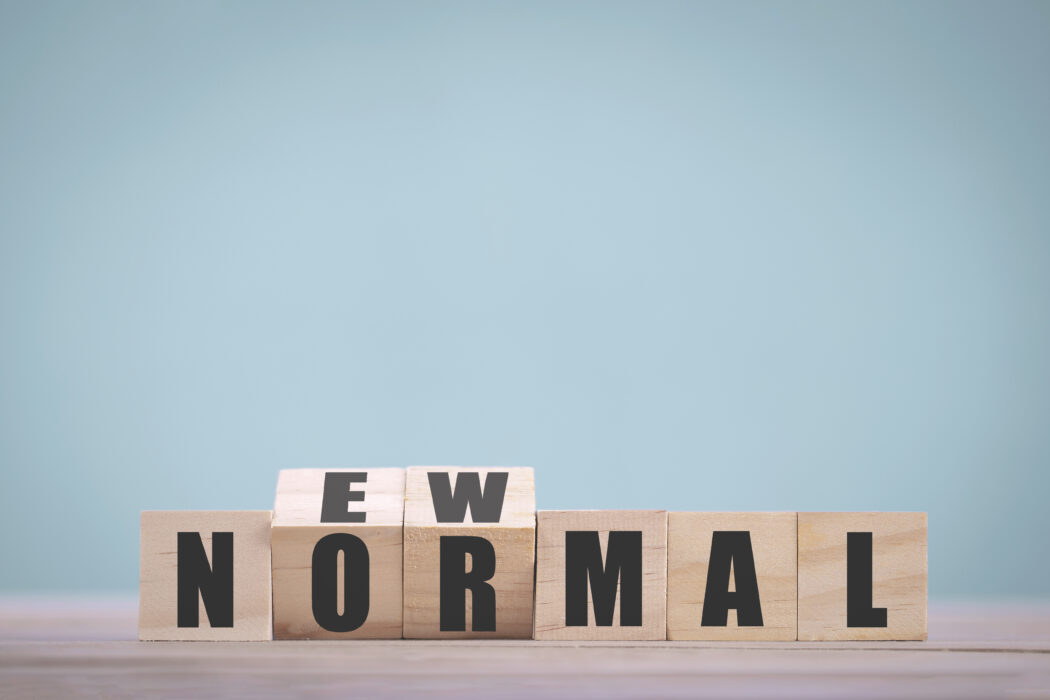Webcast Recording: Leader to Leader Webcast Series featuring John O’Leary
Last week, I was fortunate to host John O’Leary as my guest on our Leader to Leader webcast series. I was reminded that we all have a lot more agency to create a more fulfilling life than we think we do. I am well aware that I fall “below the line” more frequently than I’d like to admit. My challenge is to remember that I have a choice every day on how I’m going to show up with myself and with others. We all know this to be true, but it’s important to remind ourselves.
If you missed the live event, check out the recording below. The recording is 59 minutes and worth the investment of your time. If you’d like to learn more about John, check out his book On Fire! or email him at [email protected].
Lastly, we are scheduling guest speakers for 2025 and are looking forward to an interesting new year. If you have a speaker you would like me to interview or a leadership related topic to explore, please email me at [email protected].
To your success,


Leadership in a Post-Covid Era
When Covid hit, we were writing and talking about the “new normal” and that we were in, as William Bridges calls, the “neutral zone” leading to new beginnings. I referenced Bridges framework to help our clients understand what was going on in both their personal and professional lives. As the mask mandates continue to go away and we head back to work, it’s helpful for us as leaders to ponder the question of whether leadership has changed or perhaps not?
We have been asking ourselves the same question. Has anything changed permanently? Are we back to the old normal or is there really a new normal? To answer this question, we did a “lit search” to identify what is trending in the workplace – what people are talking about? What will be the competencies, skills, practices that we need to embrace and develop to drive our success? Her research may surprise you. Top of the list? Empathic leadership.
#1: Empathic Leadership
Empathy and support of others continues to be on the top, particularly when the context in which people are working includes high levels of complexity, uncertainty, and change. I don’t know about you, but I think we can all agree that things have gotten more complex, uncertain, and unpredictable. One of the skills noted was the practice of curiosity – which is foundational to creating cultures of empathy.
Other findings showed that empathy is not only about emotional empathy (understanding the struggles, challenges of managing a home front on top of work), but empathy is also about cognitive empathy which is really about engaging others to help us see things differently. To help us view problems through a different lens, evaluate threats that we may not see, etc. Another practice to develop greater levels of empathic leadership included learning how to give direct, clear and constructive feedback while having a greater level of awareness in how the feedback is being received; and then making it safe for team members to have healthy debate in service to the best possible solution.
#2: Empowering Teams through Purpose and Clarity
Ranked as #2 is leading in a way that empowers teams by having a clear purpose (why we’re doing what we’re doing) and being clear on expectations. The ability to communicate clear expectations and link those expectations to why they are important is key. Another practice that showed up is the team leader’s ability to communicate the value proposition underlying the work that is being done to ultimately inspire, energize, and create a sense of pride. This last practice was a big driver of engagement and increased performance.
#3: Developing Resilient Organizations
Coming in at #3 was resilience. Given all that we’ve been through, this is not a big surprise. What surfaced was the importance of leaders managing their own stress and adapting to challenging, “overloaded” environments. For this to happen, leaders need to increase their levels of self-awareness, so they are more aware of when they kick into overdrive and/or demonstrate reactive tendencies. Another aspect of developing resilience was connected to the leader’s ability to balance optimism and realism while acknowledging challenges and focusing on where the business is going.
And so, as we continue our journey into this new normal, we all need to step back and evaluate what we need to do differently. Perhaps our pre-pandemic leadership playbooks may need to have a few pages added.
Structurally Refocusing To Overcome Busyness
First, a tired but true acknowledgment: This year has been hard. We’ve adapted to tough circumstances despite profound losses. And yet, I feel a sense of hope as vaccines make their rounds and we inch towards a life free of COVID-19’s burdens. Things are looking up.
Yet organizations are still very much in the residual shadows of the virus. Perhaps physical offices are reopening, but a palpable uncertainty remains. Employees are jittery about the economy and the status of their jobs. What will the post-COVID work environment look like? Perhaps most importantly, leaders are uncertain how to effect positive change. Indeed, change is a tough pitch at a time when “normalcy” is basically all we’ve wanted for the last 13 months.
When employees and leaders are burdened by uncertainty and doubt, they usually fall back on a harried form of busyness without purpose. Leaders focus on “urgent” but not important items. The days feel full but directionless. If this sounds familiar, you’re in good company. But it’s time to structurally refocus.
Most organizations have finalized their strategic plan for the upcoming year and have identified their strategic goals or, what Jim Collins has aptly named, their “Big Hairy Audacious Goals” (“BHAGs”). As the phrase implies, these BHAGs can be intimidating, and because they have longer timelines, they often get lost in the day-to-day. Before you launch into Q2, it’s time to do a strategic reset and reintroduce structure to help you focus.
Step 1: Do a Mental Download
I suggest blocking out some time and writing down everything floating around in your head on sticky notes (a Word doc works too).
Step 2: Apply a Structural Approach To Help You Organize
Then, zoom out and implement an objective-based structure. I recommend adopting the “OKR” methodology championed by John Doerr in his book, Measure What Matters. Here are the basics: Identify your Objective, which is “what” you and/or your team want to achieve. You may have multiple objectives that support your larger BHAG. Once your Objective is identified, then shift your focus to the Key Results, which are “specific, time-bound, and measurable” progress markers for achieving your Objectives. Here’s an example:
BHAG: Become a more customer-driven organization
Objective 1: Use data-driven insights to better understand the customer’s voice
Key Results:
- Sales to conduct 25 interviews with accounts that we have lost in the past 12 months
- Marketing to launch a customer pulse survey to over 1,000 end-users
- Senior team to conduct five in-depth meetings with members of our customer advisory board
Objective 2: Increase sales revenue by 15% in Q4
Key Results:
- Hire 7 new sales reps for the sales team by the end of Q2
- Generate 10K leads and convert 35% into new sales opportunities by the end of Q3
- Reduce closed/lost opportunities from 100 to 25
Step 3: Try to Place Your To-Do’s into the BHAG Framework
See if you can place your sticky notes (or copy and paste your Word bullets) into the BHAG and OKR structure identified above. If you find it hard to place your to-do’s within the framework, you may have fallen prey to busyness without direction.
So, if you’re feeling overwhelmed or have lost sight of the bigger picture, see if you can brain dump, zoom out, and structurally refocus. You will end your week with a greater purpose and focus for what matters.
Weathering the Pandemic: Leadership Practices to Better Connect with Your Teams
It’s been nine long months in which we no longer shake hands, meet in person, or see each other except on Zoom. The stress and loss affect us emotionally, mentally, and physically. And that’s whether or not we ever test positive for the virus, which continues to be a threat. No wonder many of us are suffering from pandemic fatigue.
As this global storm tests our endurance like never before, it’s relevant to remember the saying, “Leaders bring the weather.” As leaders, we set the mood within our teams and organizations, especially in difficult times. The bad news? This battering crisis continues for now. The good news? We’ve survived long enough to know what three practices can make leaders like you resilient, effective, and positive as we weather the pandemic storm. They are:
Empathy:
Empathy is the emotional glue that connects us, when we can listen, feel for one another, and sincerely understand what others are experiencing. It means being present, engaging at a deeper heart level with genuine concern. People are yearning for emotional connection these days.
We recommend you start every meeting with the simple practice of asking the question, “How are you doing? Really doing?” If someone appears to be struggling, follow-up with a one-on-one check-in. Also, revisit your open-door policy. Prop that door wide open, figuratively of course, and be welcoming and safe at a time when our world isn’t. Relationships can be strengthened with even a few minutes of sincere conversation. A true win, win.
Vulnerability:
Vulnerability is often considered a weakness, when in fact it requires courage. In her book, “Dare to Lead,” Brené Brown describes vulnerability as “uncertainty, risk, and emotional exposure.” It’s a conscious, unsettling release of control. Effective leaders find the courage to admit when they don’t have a solution or make a mistake. They practice and get more comfortable not having the answers and, as a result, seek input from others.
We suggest you start by consciously asking more questions and encouraging team engagement. Teams that have a greater sense of vulnerability have higher trust levels, with less second-guessing. As a leader who values vulnerability, you can create an environment of accountability and compassion.
Authenticity:
Authenticity means you show up in ways that reflect who you truly are and how you feel. Rather than showing the Facebook version of yourself, or armoring up and presenting, you show up and share your whole self. Authenticity can come in the form of addressing tough issues courageously, speaking the truth, and applying your core values to make decisions.
Challenge yourself. Focus on being brave, even uncomfortably authentic. How? By being direct, candid, and honest, while still showing respect and love for your team. You’ll find it surprisingly freeing. Eventually, a sense of balance and openness becomes the norm, your team existing ‘above the line’ in that ideal space that defines a low drama, high performing, healthy work environment.
Construction zone ahead: our findings reveal that effective leaders continually invest in their personal growth. If the practices of empathy, vulnerability, and authenticity could be ordered on Amazon, they’d be in as much demand as hand sanitizer and Clorox wipes. Instead, each one takes practice and long-term commitment on your part. But the proven results, of improved job satisfaction and higher performance overall, make this work important and rewarding.
So roll up your sleeves – not for the vaccine yet – but to reflect on and explore the practices that can make you a better, more resilient leader at a time when your team needs you most.
COVID’s Silver Linings: Five Things Teams Want to Take with Them to the New Normal
This weekend I sat outside at my favorite local brewery and was immensely grateful that things were beginning to look like pre-COVID times.
And yet, having facilitated countless Zoom call “check-ins” with our leadership cohort groups, it’s also apparent that many of them don’t miss a lot of things that were part of our everyday life pre-COVID. As a follow up to the discussion on Leading Through Chaos, here are some of COVID’s silver linings teams want to carry forward:
Better balance. Some of us have seen more of our families in the last three months than we did in the entire year prior. This time to come together with family has been a completely unexpected gift for many. Carving out time for family can be hard, and yet my hope is we will find ways to achieve this better balance going forward.
Deeper team relationships. Many leadership cohorts were grateful for stronger personal connections among colleagues. Indeed, despite the virtual distance, we’ve connected with our teams more than ever during this pandemic. I’ve heard numerous times how much people have appreciated their boss and colleagues calling in to check on them and their families. This connection among teams not only makes for happier employees but also drives team cohesion and performance.
Quicker decision making. We’ve had to make decisions quickly with imperfect and incomplete information. We’ve had to push the button when we weren’t positive it would work. And surprisingly, many of us have experienced better results. Sometimes we get so bogged down in analysis that we unnecessarily bottleneck our decision-making process.
Cross-functional collaboration. This one I didn’t expect, but teams have described more cross-functional collaboration and cooperation. People are jumping in to help their colleagues and working more collaboratively toward common goals, often moving beyond the confines of their job titles to drive results.
Focusing on the essentials. The challenge (and beauty) of a crisis is that it forces companies to focus on the things necessary to move the business forward. For leaders, this can also mean less micromanagement and greater autonomy for employees. Ironically, this bottom-up empowerment model often drives better results than when managers feel like they can handle it all.
As businesses reopen and life seems to revert to the pre-COVID days, we also know that the world-and business broadly-is an undoubtedly different landscape than it was February. And while it’s easy to slip into our old ways, we need to reflect on what has worked well in the COVID environment. While the weeks at home without restaurants and gyms were a challenge, there were also many silver linings.
We love hearing from our teams; if you would like to share more about your COVID experiences and silver linings, please comment below.





